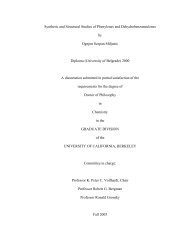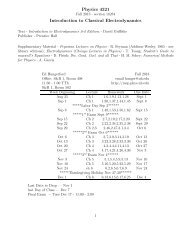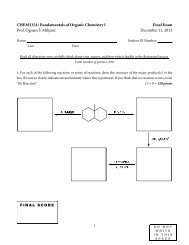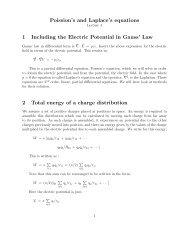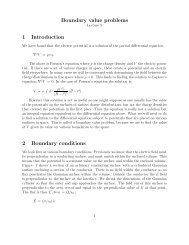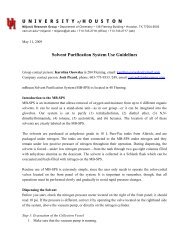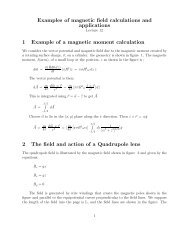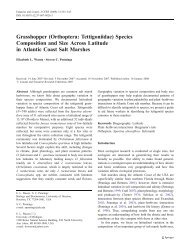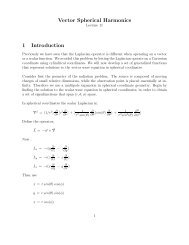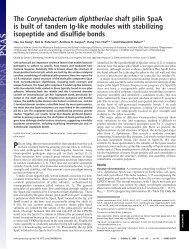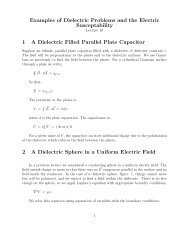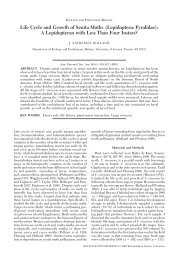Scattering 1 Classical scattering of a charged particle (Rutherford ...
Scattering 1 Classical scattering of a charged particle (Rutherford ...
Scattering 1 Classical scattering of a charged particle (Rutherford ...
Create successful ePaper yourself
Turn your PDF publications into a flip-book with our unique Google optimized e-Paper software.
E ≈ E 0 e iω(t−z/c) iω(n − 1)∆z[1 − c ]Divide through by the thickness ∆z and identify this result with the previous calculation <strong>of</strong>the scattered field;(n − 1) = 2πq2 (N/∆z)4πǫm(ω 2 0 − ω2 )The term N/∆z is the Number density <strong>of</strong> the electrons.11 Cherenkov RadiationCherenkov radiation occurs when a <strong>charged</strong> <strong>particle</strong> is moving faster that EM radiation travelsin that medium. Observe figure 8. The present point lies a further distance from theretarded point than the observation point. That is V (t − t ′ ) > (c/n)(t − t ′ ). Here, n is theindex <strong>of</strong> refraction <strong>of</strong> the medium. A wave front can be drawn as a line that lies from thetangent to the spherical wave front to the present point as shown in fig. 8. Each sphericalwave front from a point along the <strong>particle</strong> trajectory will be tangent to this line. The angle<strong>of</strong> propagation <strong>of</strong> the wave front θ is obtained from the figure as;(c/n)tθFigure 8: The geometry <strong>of</strong> wave fronts in Chernekov radiationvtcos(θ) = ct/nvt= 1nβPreviously we chose the retarded point <strong>of</strong> the Lienard-Eiechert potentials because <strong>of</strong> causality.In Cherenkov radiation both retarded and advanced points are possible solutions as onecan see in fig. 9 The positions <strong>of</strong> the observation and present points are related by (we usec here but note that it is really c/n);c(t − t ′ ) = | ⃗ X + ⃗ V (t − t ′ )| = R/c16




